
Mention Xi’an – one of China’s 656 cities and more often than not, you’ll (understandably) get a blank look.
Followed by: “How do you say that? EX-ee-arn? See-arn?”
For the record, the general consensus round these parts seems to be Shee-arn – with a slight T sound on the S… which of course if you’re a westerner who’s never learned Chinese before, sounds about as foreign as having er, mustard on your toast!
Mention the “Terracotta Warriors” though and there’s usually a collective “Ahhh oohhh …yes, yes! I’ve heard of the Terracotta Army!”
There’s no doubt this legion of clay soldiers has put Xi’an, the ancient capital of China back on the map.
If China’s on your bucket list and you love a bit of historical mystery – it’s usually Beijing, Shanghai and then Xi’an, for a glimpse of these now, world-famous warriors.
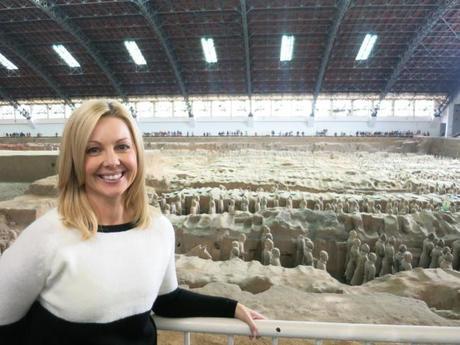
Of course it was only a matter of time before I went to check out this global phenomenon myself.
I’m sure it won’t be the last – have visitors, our clay friends will no doubt top the list of must-see sights!
They have been declared the 8th Wonder of the Ancient World. (FYI, there are seven ‘official’ wonders – including the Grand Canyon and the Great Barrier Reef – but visiting former French President Jaques Chirac was so impressed, he thought they should be added to the list!)
After witnessing the miracle of these majestic warriors on display, I must say I’m inclined to agree!
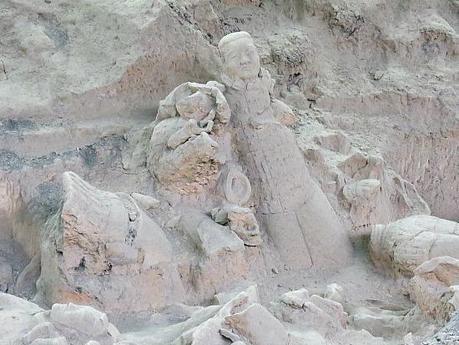
Incredibly, they were only unearthed in 1974 - just 40 years ago.
So how an earth did an estimated 8,000 thousand life-size pottery warriors and horses slide under the radar for a mere 2,200 years?
The story goes — they were so far underground (and most of them smashed into a million pieces) that previous farmers on the land at XiYang Village, east of Xi’an had simply dismissed any fragments of clay found over the years. That is until one day local peasants drilling a well in search of water happened to run into these blokes again… well, pieces of broken pottery along with some pretty impressive ancient bronze weapons! Initially thinking they’d found jars from an old kiln, instead exposing the pottery head of a soldier, they knew they’d uncovered something out of the ordinary and called the village head, who in turn called the government to investigate matters further.
And as they say, the rest is history!
Exploration and excavation began on what they call the ‘first pit’ in earnest and one by one this army of troops was revealed; some missing arms, legs, heads, some in a thousand pieces and some still in tact, still standing, perfectly formed!!
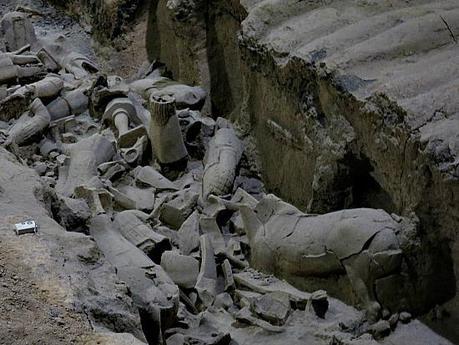
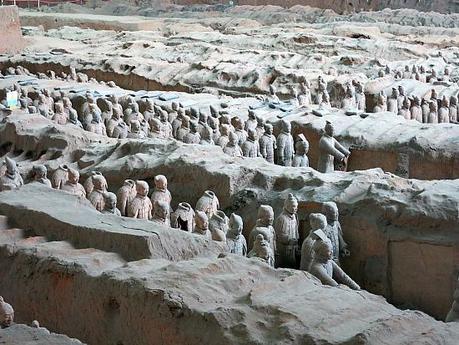
I’m no history buff, but to put it in simple terms….here’s how the Terracotta Army came into being.
It was 247 BC and there was a 13 year old boy who’d just became King of the Qin State. (Qin translates to China.)
At the time China was made up of seven kingdoms and this young boy who was smart and ambitious set out to unify China.
By the age of 39 he had successfully completed his mission, calling himself the First Emperor of China. Emperor Qin of the Qin Dynasty.
Clearly as well as being industrious, he also carried a bit of an ego because soon after becoming King he designed his own mausoleum where he would be buried when he died (with a piece of gold in one hand and a piece of jade in the other to protect him in the afterlife)!
Bearing an overwhelming fear of death, the Emperor believed that life underground after death was a continuation of life on earth.
Thus, his mausoleum wasn’t just any old grave, it was the largest tomb in the world!
At 56 square kilometres, standing 100 metres high, he drafted a labour force of 700-thousand people to build it.
It took 38 years!
Constructed between Xi’an’s Mount Li and the Wei River for good Feng Shui…it was an underground treasure house. This subterranean palace contained replica rivers and streams in quicksilver; pits of rare birds and animals, bronze chariots and horses, plus precious stones; while his outer coffin was made of molten copper and surrounded by candles made of whale oil to ensure they would burn eternally.
Guarding the entrance to this palatial tomb stood the Terracotta Warriors, each one made to reflect individual real-life soldiers.
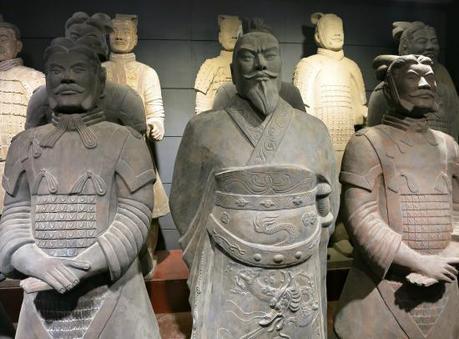
Every single one was different.
Made from local clay – that is clearly unique – allowing the warriors to survive to this day — it’s believed the torso and arms of the soldiers were hollow, using thick clay coils in the middle, with the clay moulded around the outside. The legs were solid and the facial features sculpted by sharp bamboo. It’s thought they were put into the natural air to dry before being fired at around 1000 degrees.
Remember this is 2200 years ago but the technology used has been praised as quite remarkable.
Each warrior was painted in bold, bright colors, believed to be a layer of lacquer on the surface and then colored with paint made of minerals.
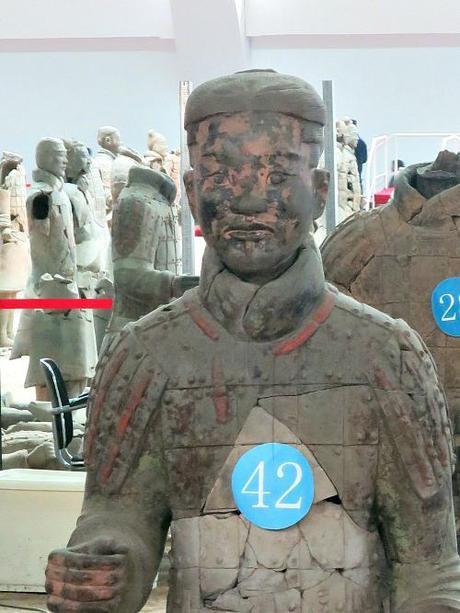
The Emperor’s obsession with his mortality, made him determined to find the elixir of life and at 50, he reportedly took a potion to ensure his longevity which ironically contained mercury and killed him!
The following year the Qin Dynasty was vehemently overthrown and the Terracotta Warriors surrounding the mausoleum smashed to pieces and burned, submerged for the next 2,200 years….
That is until, their miraculous discovery!
Following the discovery of pit no 1, pit no 2 and 3 were also uncovered in 1976. All three pits are five to seven metres below ground level, the warriors lined up in battle formation, standing on paved pottery bricks with a wooden roof covered by layers of thick fibre mats, fine soil and tilled earth to conceal the army.
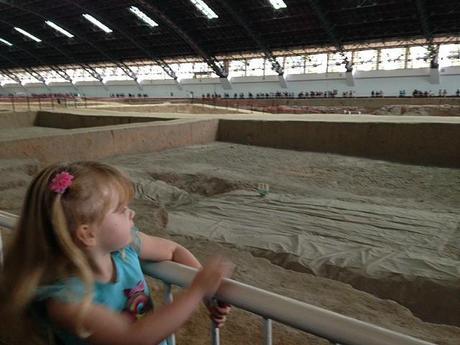
Each pit is different in shape – pit three the smallest at 520 square metres – pit one the largest at 14,000 square metres.
First opened to the public in 1979 as ‘Emperor QinShihuang’s Terra-Cotta Museum’, 2000 square metres had been excavated and 1087 terra-cotta warriors and horses were on display.
The XiYang Village became world famous.
In 1986, the Queen of England came to visit the site and wanted the main founder of the warriors to sign something for her, but as a peasant farmer he was illiterate.
From that day on a famous Chinese calligrapher was called in to teach him to sign his name. And it seems he’s never stopped. When we visited, the former farmer, now 80, was there signing book after book!
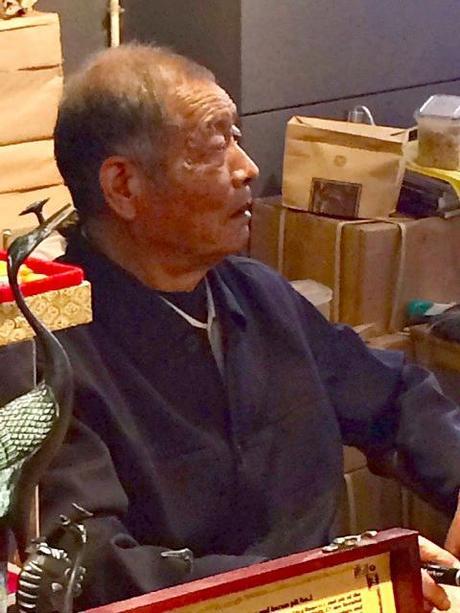

Standing inside these massive hangar-like structures (the original site of the pits) it’s a breath taking sight. Rows upon rows of life-size warriors stare resolutely forward, in a ghostly manner.
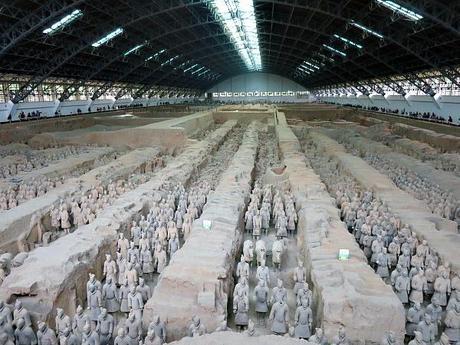
Each section of warriors is representative of infantrymen, cavalrymen, archers and charioteers all with varying weapons according to rank, along with different hairstyles and clothing to mark their authority.
Seeing them assembled as they originally would have been, it’s hard to comprehend this spectacular excavation process.
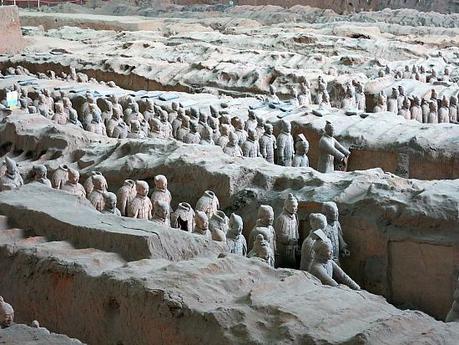

In the beginning there were just two people reconstructing these soldiers, piece by piece, bit by bit.
By 1990 there were 24 and today hundreds of skilled men and women from all over the world work on piecing together thousands of clay fragments, in piles waiting for connection.
If the workers can find one piece that fits in a day, it’s considered “a lucky day!”
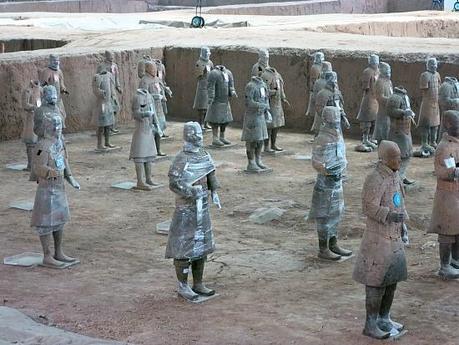
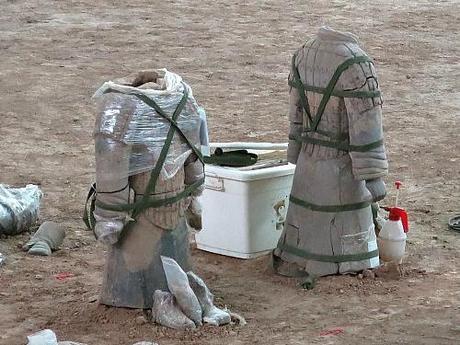
To complete one soldier it takes around seven years and many cannot be restored.
There are no new pieces used.
And what’s even more incredible? There are still many hundreds of warriors buried, yet to be unearthed.
As technology expands, there is a tendency to leave the warriors until more is known. You may remember I said these warriors were painted bright colors, bold blues, reds and yellows? When they have been uncovered, in the past, many of them still wore flakes of colored paint – which in the open air quickly oxidates.
It’s hoped over time, archeologists will discover new technologies to keep them in their preserved state.
Also uncovered near the mausoleum were two sets of bronze chariots, namely the biggest bronze work in the world. A chariot weighing 1100 kilos!

It’s believed these (modeled at half the size of a real chariot, horse and driver) were to be used by the Emperor when he went on inspection tours in his afterlife.
In the last 20 years, it’s become the biggest museum in China bringing in 40,000 visitors a day.
Considered to be one of he most important archaeological discoveries of the 20th Century, there’s no denying Xi’an’s gone to the pot!
The terracotta type that is!
A jigsaw that once completed will surely stand the test of time.
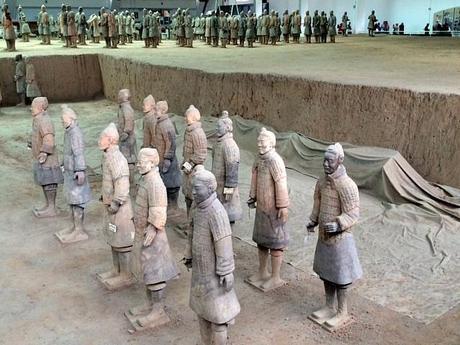
Visiting Xi’an?
Fast Facts:
Where: The site of the Terracotta Warriors is around 45 minutes (or 35 kilometres) east of Xi’an city.
When: Open all year round.
Costs: CNY150 (March 1 – end of November) CNY120 (December 1 – end of February)
Time: Allow yourself at least half a day to see this spectacle.
What: Wheelchairs available. BYO child’s stroller recommended.
Eat: There are tea houses/restaurants plus tourist stalls selling memorabilia.
How: Find more information here.
Tips: If you can, I recommend hiring a tour guide to take you through the pits so you can understand the fascinating history behind the phenomenal Terracotta Army!

